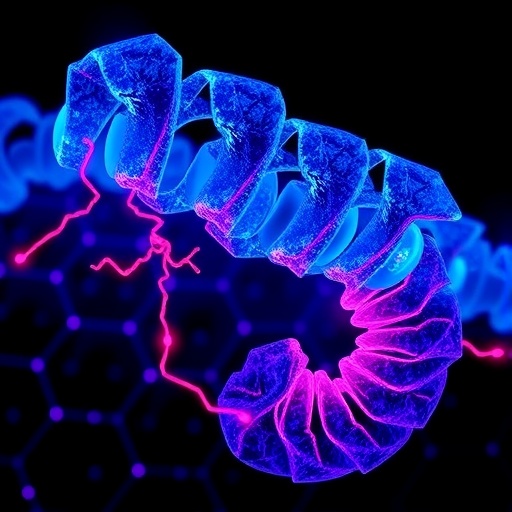Philadelphia, Dec. 8, 2017 -A report in The Journal of Molecular Diagnostics, describes a new simple molecular test to detect chromosomal abnormalities — biomarkers known as telomere fusions–in pancreatic tumor specimens and pancreatic cyst fluids. This assay may help predict the presence of high-grade or invasive pancreatic cancers requiring surgical intervention.
More sophisticated imaging of the pancreas has led to increased detection of presymptomatic lesions. The detection of telomere fusions has the potential to help physicians determine whether these lesions have a high likelihood of developing into pancreatic cancer requiring surgical resection or are more likely to be benign and can be followed by "watchful waiting."
"Clinicians rely on international consensus guidelines to help manage patients with pancreatic cancer precursor lesions such as intraductal papillary mucinous neoplasms (IPMNs). These guidelines are useful but pancreatic imaging does not provide sufficient information about the neoplastic nature of a pancreatic cyst. Better characterization of pancreatic cysts could allow more patients with worrisome cysts to continue with surveillance, avoiding the morbidity and risks related to pancreatic surgery," explained Michael Goggins, MD, Sol Goldman Professor of Pancreatic Cancer Research, Departments of Pathology, Surgery, and Oncology, Sol Goldman Pancreatic Cancer Research Center, Johns Hopkins University School of Medicine (Baltimore).
Telomeres are regions of repetitive nucleotide sequences found at the ends of chromosomes that, under normal circumstances, keep the chromosome intact. When telomeres lose most or all of their telomere repeat sequences, the ends can fuse, leading to cell death or chromosomal instability. "This is a major mechanism that contributes to the progression of many precancerous neoplasms to invasive cancers," said Dr. Goggins. "Telomere fusions can serve as a marker for predicting the presence of high-grade dysplasia and/or invasive cancer."
In this report, investigators describe a PCR-based assay to detect telomere fusions in samples of pancreatic tumor or cyst fluid. The assay incorporates two rounds of PCR with the second round using a telomere repeat probe to detect the fusions.
The researchers analyzed tissues from IPMN tumor samples taken from patients undergoing resection, surgical cyst fluid samples, and normal pancreas. IPMNs are the most common type of pancreatic neoplastic cysts. They are characterized by the papillary proliferation of mucin-producing epithelial cells and cystic dilatation of the main or branch pancreatic duct.
This telomere fusion assay was able to identify telomere fusions in more than half of the pancreatic cell lines. Telomere fusions were often detected in tumors with high-grade dysplasia (containing more abnormal cells). Telomere fusions were not found in normal pancreas or samples with low-grade dysplasia.
Similar findings were seen in analyses of cyst fluid, in which the presence of telomere fusions raised the likelihood of high-grade dysplasia or invasive cancer six fold. The telomere fusion events were found to be associated with high telomerase activity (an enzyme that lengthens telomeres) and shortened telomere length.
"We have developed a simple molecular test to detect telomere fusions. This telomere fusion detection assay is a cheaper method for evaluating pancreatic cyst fluid than many next-generation sequencing approaches that are being evaluated for this purpose," noted Dr. Goggins.
"The authors succeed in showing the presence of shortened telomeres, sporadic telomeric fusions, and increased telomerase activity in a modest proportion of pancreatic lesions," commented Loren Joseph, MD, of the Department of Pathology at Beth Israel Deaconess Medical Center, Harvard Medical School (Boston), in an accompanying editorial. He added that the techniques used to detect fusions from cyst DNA and to measure telomere length and telomerase activity are within the scope of many molecular diagnostic laboratories.
###
Media Contact
Eileen Leahy
[email protected]
732-238-3628
@elseviernews
http://www.elsevier.com
http://dx.doi.org/10.1016/j.jmoldx.2017.09.006




